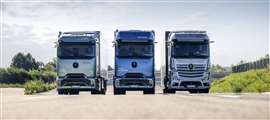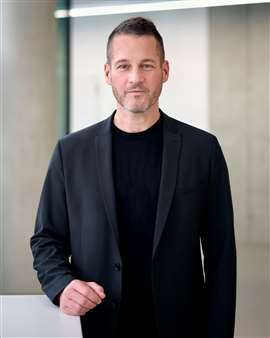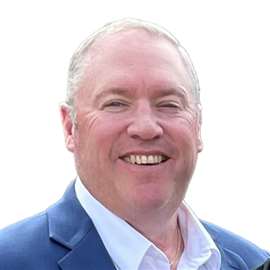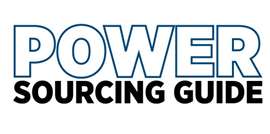Daimler Truck’s Andreas Gorbach says more support needed for zero-emission rollout
11 February 2025
‘Failure is not an option’ article covers how to incentivise switch to new fuel powertrains in CV market
 Daimler Truck models featuring carbon-neutral and zero-carbon powertrains (Photo: Daimler Truck)
Daimler Truck models featuring carbon-neutral and zero-carbon powertrains (Photo: Daimler Truck)
Andreas Gorbach, board member at Daimler Truck and head of Truck Technology, has issued a series of steps which he believes must be enacted to both support OEM truck manufacturers and to create zero-emission distribution networks in Europe.
In the release, entitled ‘Failure is not an option’ (written on the page in all capitals), Gorbach says that trucks and buses will remain the backbone of the economy and society in Europe.
Yet while emission-free vehicles are available now, manufacturers will still face “draconian” penalties due to the lack of cost parity with diesel models and the lack of zero-emission refuelling infrastructure.
 Andreas Gorbach (Photo: Daimler Truck)
Andreas Gorbach (Photo: Daimler Truck)
He puts forward that in addition to electric and hydrogen-powered trucks, carbon-neutral fuels such as HVO/renewable diesel can also play a role in the future of zero-carbon transport.
Changes related to these points need to be put in place for European OEMs to remain competitive, or non-European manufacturers will gain considerable market share in Europe.
Gorbach stated that switching the estimated six million trucks operating across Europe to battery-electric power would require about 350 TWh of green energy each year. By comparison, total electricity demand in Germany for 2023 was 500 TWh.
Along those same lines, 10 MW is required to recharge multiple trucks at a single rest area. Yet planning and construction for these locations can take up to 10 years.
With this in mind, he puts forward that battery-electric trucks are not the single solution to decarbonising European transport networks. Instead, it will be necessary to develop networks for both electric and hydrogen trucks and buses. This will be faster and more cost-effective than developing infrastructure for only one solution.
Unlike batteries, Gorbach said that Europe is a leader in hydrogen know-how and “investment in these technologies is an investment in Europe’s future competitiveness.”
He continued by saying that the commercial vehicle industry has been investing billions in decarbonization for years. But high prices for green energy, in combination with very little infrastructure, is slowing down the decarbonisation process. Yet while OEMs have very little influence on either of these factors, it will be those companies which face the penalties for not reaching CO2 targets for 2030.
Penalties which, per tonne of CO2, are 10 times higher than those levied against the passenger car industry.
In essence, the point is that if zero-carbon transport solutions cannot be made cost effective, both at point of purchase and over operation, businesses will continue to choose diesel as it still delivers a positive operating margin.
To move operators over to new-fuel vehicles, Gorbach put forward that it would be necessary to incorporate CO2 emissions (by fuel type) into truck tolls. This needs to be implemented across the European Union in a cohesive network, with generated revenues directed back into infrastructure growth.
On top of that, by 2030 it will be necessary to install 35,000 fast charging points greater than 800 kW, plus 2,000 hydrogen refuelling points for both trucks and buses.
Unless this is done, OEMs within the EU will face fines for supplying diesel trucks to customers unwilling to make the switch to new fuels, while OEMs from outside the EU will enter the market supported by lower wages and energy prices, government subsidies and less bureaucracy – a situation already apparent in the bus market.
Lastly, Gorbach noted that vehicles using carbon-neutral fuels should add into the CO2 targets of the commercial vehicle industry, rather than installing long and cost-intensive procedures for each vehicle. Combined with a reduction in related regulations, it should create a more level playing field when it comes to the rollout of new fuels across the trucking industry.
This is one of the most public calls to date from an OEM pushing for assistance in advancing the new fuels commercial vehicle market. While governments have talked about the need for infrastructure creation, this has largely been left to the private sector - a private sector made up of many companies still dependent on oil revenues.
Up until now, the new vehicles/new fuel delivery timetable has been comparable to the chicken/egg scenario, with no one quite knowing which would come first. As Gorbach noted, the vehicles are here. It’s now time to deliver the financial backing which will support production of the energy and related dispensing infrastructure. Without this support, government emissions reduction targets for commercial transport will be difficult - if not impossible - to achieve.
POWER SOURCING GUIDE
The trusted reference and buyer’s guide for 83 years
The original “desktop search engine,” guiding nearly 10,000 users in more than 90 countries it is the primary reference for specifications and details on all the components that go into engine systems.
Visit Now
STAY CONNECTED




Receive the information you need when you need it through our world-leading magazines, newsletters and daily briefings.
CONNECT WITH THE TEAM









